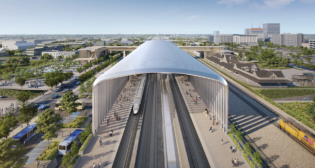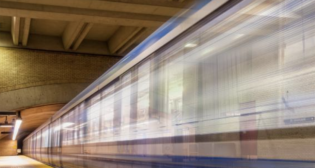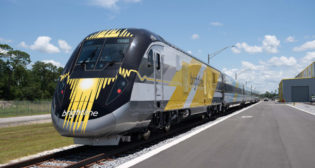
Amtrak LD Service: Why Integrated Trainsets Won’t Work
Written by Jim Tilley, President, Florida Coalition of Rail Passengers
Jim Tilley
As Sept. 30, the end of its 2023 Fiscal Year, rapidly approaches, Amtrak has precious little time to firm up design specs and place an order for what appears to be a complete redesign of the long-distance (LD) passenger service. The IIJA (Infrastructure Investment and Jobs Act) provided five fiscal years of advance authorized funding for which Amtrak has, at most, three years left to obligate. The railroad has previewed an integrated trainset design based on 10-car single-level and nine-car bilevel consists focused upon accessibility, but did not address other critical issues.
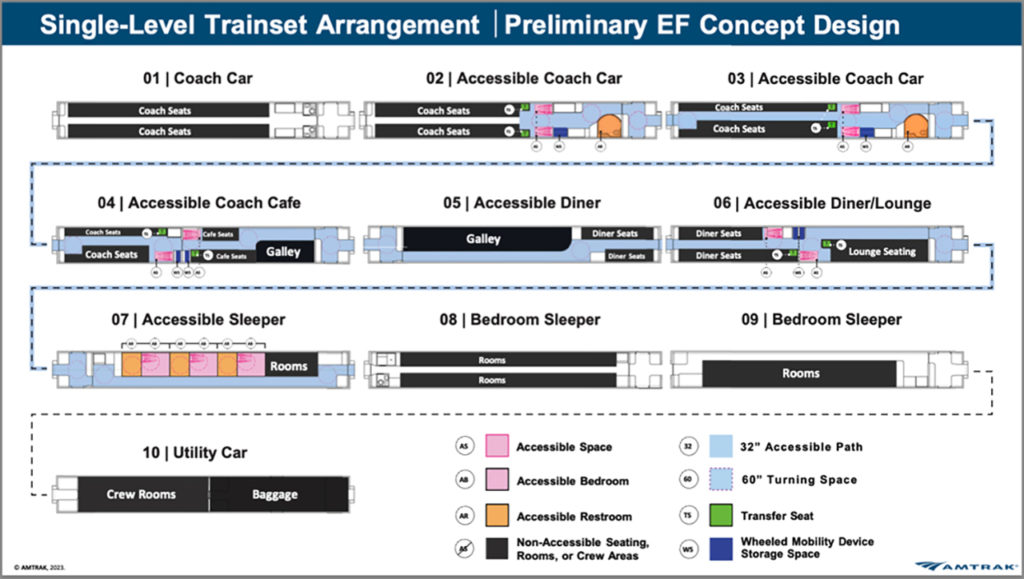
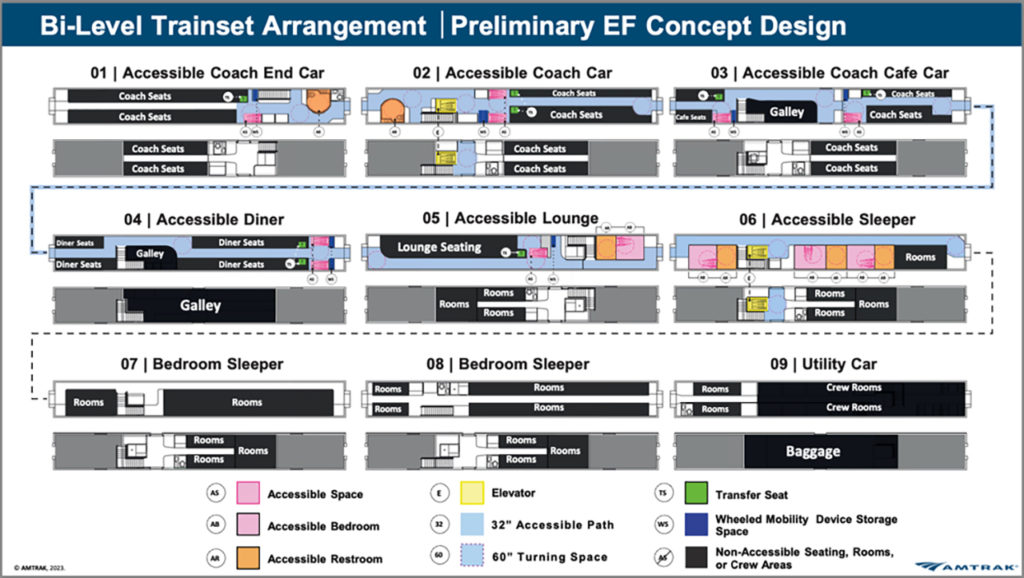
Since at least 2010, Amtrak’s fleet plans have stressed the need to address replacing its increasingly aged railcar fleet. A 2018 statement of “fleet planning principles” included a guiding principle relating to the need to order “off-the-shelf designs.” Upon passage of the IIJA, it became increasingly apparent that not only had Amtrak failed to perform scheduled maintenance on its long-distance fleet but that no advance design work had been completed to expedite an order for replacement cars. The integrated trainset preview was notable in that, first, no railcar builder (not even Siemens and Alstom, both currently building new equipment) was there to elaborate upon Amtrak’s design ideas; second, Amtrak did not attribute any of the concepts presented to supplier feedback solicited early this year. It is unclear, at best, if any carbuilder is prepared to execute the concept outlined.
Right now, three designs meet all FRA and ADA requirements: the Siemens Venture car and Airo integrated trainset, and the Viewliner, an Amtrak design that has been adopted for dining cars, baggage cars and sleepers. Were Amtrak motivated to re-equip the LD service, one might surmise that these designs would be central to an initial order. But that appears not to be the case.
Amtrak has the capability to modify existing equipment to immediately offer increased accessibility that would be available sooner than awaiting a ten-year delivery window, which has characterized recent Amtrak car orders. Rocky Mountaineer recently gutted railcars built in the 1950s and remanufactured them at a reported cost that is 60% of that for a new car and extended the 60-plus-year-old cars’ life by 10 years. These cars are presently in service between Denver and Moab, Utah, operating over the Union Pacific and yielding premium pricing for a premium travel experience. Similarly, VIA Rail Canada has remanufactured Budd Company railcars originally built in the 1950s to support the Toronto-Vancouver Canadian.
There are no indications that this avenue is being pursued by Amtrak.
The focus upon integrated trainsets ignores the fact that Amtrak’s operating plans encompass redeploying discrete segments of railcar capacity from one market to another to address demand seasonality. Moreover, Amtrak operates shorter trainsets that combine or split with other trains for movement as a single entity to a terminating station. It is difficult to envision how such an operating plan would be supported if total reliance is placed upon integrated trainsets—which would be incompatible with existing equipment, further complicating execution of an operating plan.
The Alstom Acela II trainsets were ordered more than seven years ago and have yet to enter service. Amtrak placed an order for 125 Viewliners with CAF in 2010, and ten years later, cars were still entering service long after the initial target date. Due to an Amtrak design deficiency, each of the new Viewliner sleepers lacks a linen closet, resulting in a sleeping car room being used for linen and supplies as opposed to being available for sale.
The Amtrak OIG has already reported delays in delivery of the new Siemens Airo single-level integrated trainsets, as design oversights by Amtrak resulted in $40 million in additional change-order related costs combined with a six-month delay in delivery. Amtrak participated in the design of the “Next Generation Bi-level Railcar” that Nippon Sharyo was to build. The contract was let in 2012, subsequent to design work that commenced with passage of PRIIA in 2008. The cars failed an FRA mandated buff strength test during the summer of 2015. An inability by Nippon Sharyo to rectify the flawed design resulted in the contract being cancelled in 2017 to enable awarding of the contract to Siemens for Venture cars and utilize federal funding before the authorization expired.
Amtrak can ill-afford a repeat of this scenario.
Amtrak is to be commended for attempting to exceed ADA requirements for the LD fleet acquisition. Then again, perhaps not. Regulatory hurdles are daunting and can be a challenge to meet. Given supply bottlenecks and the aged nature of Amtrak’s LD fleet, adoption of existing designs with minimal modifications would seem to be the logical path forward to expedite delivery of equipment that can be placed into service immediately—equipment compatible with the existing fleet and that offers the flexibility to be redeployed between markets as demand ebbs and flows.
